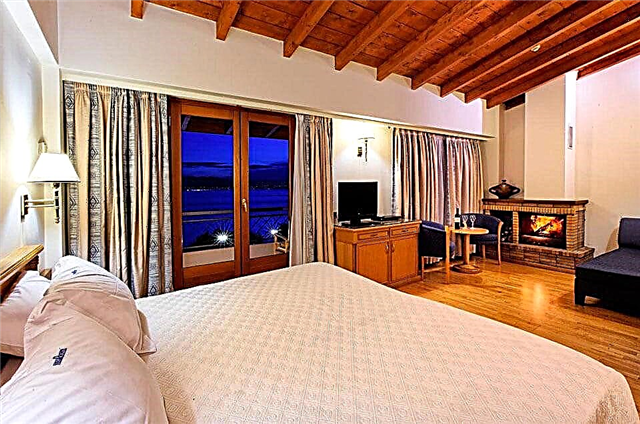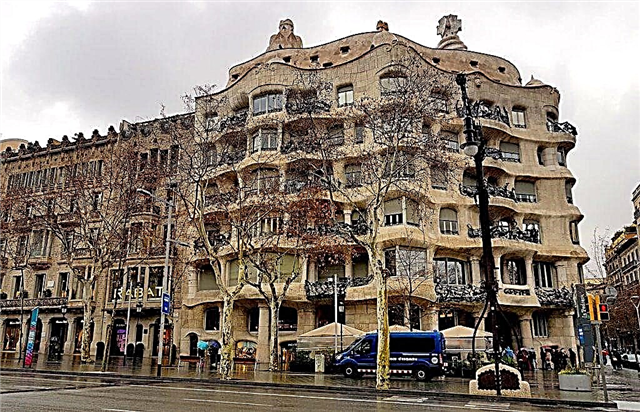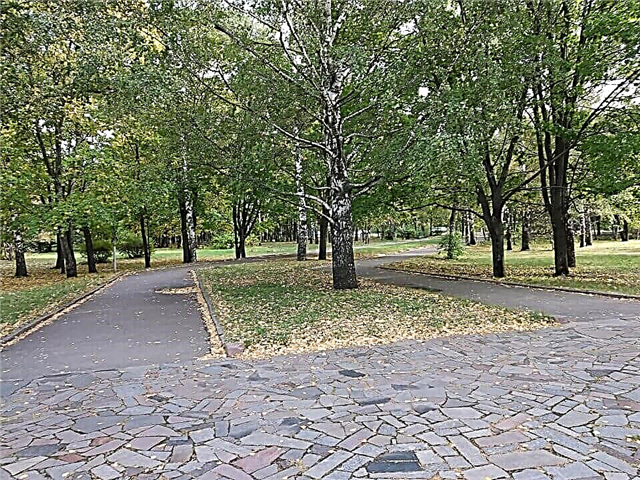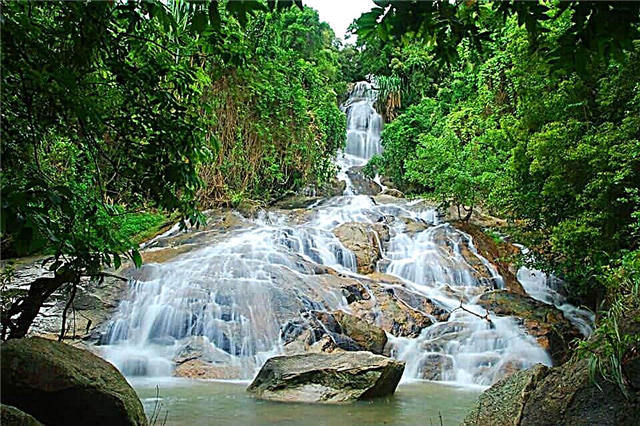In megacities, life always flows dynamically and quickly. That is why the residents of the capital often ask themselves where they can go on a weekend from Moscow by car, in order to take a break from the usual urban bustle, enjoy the beautiful nature or quiet provincial streets, wander through museums, learn about the history of our country, touch her culture.
Art Park "Nikola-Lenivets"

Not far from Moscow, in the Kaluga region, there is a beautiful natural and creative park Nikola-Lenivets. Its history began not so long ago, they started talking about an unusual art zone in 2000. It was then that two Muscovites, Vasily Shchetinin and Nikolai Polissky, managed to realize the dream of creating an ideal creative village from their point of view, far from civilization and city bustle.
Since then, the Archstoyanie festival has been held regularly, three times a year, on the territory of the park, dedicated to various topics. In winter it can be, for example, a parade of snowmen, in summer - a grandiose construction of the "Tower of Babel" from hay, and so on. But even on days when the holidays are quiet, there is still something to do in Nikole-Lenivets.
Firstly, everyone can work on the farm - for many it becomes an exciting adventure. Secondly, you can admire the unusual sculptures. For example, a lion made of rubber tires.
Children especially like them, because this open-air museum is not an exposition, but "alive" - everything can be touched, studied and even "conquered" by climbing to the very top.
Husky Land

Just a few dozen kilometers from noisy Moscow, there is a wonderful place where you can get acquainted with the customs and cultural traditions of the inhabitants of Chukotka - the ethnographic complex Husky Land. The main inhabitants of the farm, as you might guess from the name, are wonderful dogs with whom you can take pictures, feed and even ride in sleds in the winter season. There are also friendly deer here.
In addition to communicating with animals, guests are offered a national Chukchi program - you can visit the yaranga and see how everything is tripled there, take part in ancient rituals and even make a wish that will certainly come true. In general, this is great entertainment for those who want to escape from the gray everyday life, spend the day in an unusual and bright way.
Bird Park "Sparrows"

In 2005, a very unusual park appeared in the Kaluga Region, a cross between a village courtyard and a mini-zoo. Since then, the project has steadily developed, and today more than 2000 species of birds live on the territory.
And, of course, these are not only sparrows, as the name might suggest. There are owls, parrots, and many others here. At first glance, you might think that the tour is primarily aimed at children. In fact, it will be interesting for adults too.
There are recreation areas on the territory of the park, you can rent a barbecue and even grill a barbecue in a specially designated place, enjoying the beautiful nature. For those who want to take a break from the endless bustle of the city, there is simply no better place.
Borovsk and Ethnomir

Borovsk is a small town in the Kaluga region, founded before the Tatar-Mongol invasion. For another couple of decades, it was not known in the tourist world and was not much different from many other provincial neighbors.
Of the local attractions, it was possible to note only the Intercession Monastery, founded in the 15th century, and numerous paintings on the walls - the administration in every possible way encourages creative people, and with the support of the leadership, they managed to "revive" many boring industrial buildings. In the 2000s, the situation changed dramatically.
The so-called Ethnomir appeared in the city, occupying an area of 40 hectares. In fact, the complex is an interactive open-air museum divided into many zones - each of them is dedicated to the life and life of a particular people. Here you can not only watch, but also touch, climb and feel "inside" the exposition.
Senezhsky lake

Looking at the photographs of Lake Senezh, it is difficult even to believe that this place is located in the Moscow region - such a beautiful nature, untouched by man, it seems, could be preserved only in the distant outback. But the fact remains - you can get to it from the capital without any problems in literally an hour.
Senezh is not a natural reservoir, it is a reservoir built in 1826 in order to make it easier to transport materials to the construction site of the Cathedral of Christ the Savior. He did not have any important strategic purpose.
Perhaps that is why the age of industrialization seemed to have bypassed these edges. Senezh is just a paradise for fishermen. The catches here are really royal, competitions are regularly held among amateurs and professionals.
You can fish both from the shore and from a boat. For those who are not interested in "river hunting", there is a standard set of entertainment - rental stations for the same boats, beaches, cozy cafes on the shore.
Vladimir

The beautiful city of Vladimir, which has celebrated more than one anniversary, including the 1000th anniversary, was founded back in 990. In memory of the deeds of bygone days, magnificent white-stone cathedrals, the Assumption and Dmitrievsky, as well as the residence of Prince Andrei Bogolyubsky, in the village of Bogolyubovo, have been preserved.
All of them are wonderful examples of ancient Russian architecture, which today attract hundreds of thousands of tourists from all over the world. Another highlight among local attractions is the magnificent Golden Gate, a symbol of Vladimir's past in the capital (the city really had the status of the main one in Ancient Rus for a long time).
Inside you can see an exposition dedicated to the Tatar-Mongol invasion. In recent years, Vladimir has noticeably changed. The center has its own "Arbat" - pedestrian Georgievskaya Street, reminiscent of another page in the history of the city - its provincial past of the 18th-19th centuries.
Here you can look at old houses, a pharmacy, and also admire the views of the Klyazma from one of the observation platforms. And, of course, try Suzdal mead in an outdoor or indoor cafe.
In Vladimir, GuruTurizma recommends the following hotels:
AMAKS Gold Ring
This 15-storey hotel is the largest in the city

Russian village
It offers a sauna with indoor pool and billiards

Kolomna

The small town of Kolomna, located in the Moscow region, is known primarily as a place for the production of beautiful marshmallows, which have become its symbol and "visiting card". But few think that this is one of the most ancient cities in the Moscow region. Today, the Kremlin reminds of the distant past, which looks very contrasting against the backdrop of the ultra-modern high-tech Ice Palace.
There are other contradictions here that coexist peacefully with each other. For example, abandoned courtyards and “godforsaken” alleys adjoin the “ceremonial” center; a street named after the famous revolutionary Lazarev leads to the Assumption Cathedral. Kolomna is like a colorful patchwork quilt, bright and eye-catching.
Yaroslavl

Beautiful Yaroslavl, the pearl of the Golden Ring of Russia, is different from all its neighbors. He is not as monumental as Vladimir. Not as colorful and provincial as Kostroma, not as "golden-domed" as Suzdal. But, nevertheless, beautiful. Initially, it was formed as the capital of the merchants.
Perhaps this gave him some lightness, carelessness and some kind of unique beauty. The visiting card is the arrow of the Volga and Kotorosl, two rivers that merge right next to the city.The barges passing by perfectly complement the fountain and park ensemble of the embankment.
It makes no sense to list all the sights of Yaroslavl - there are more than eight hundred of them in the city. If there is not too much time, then it is more logical and correct to start your acquaintance with the Kremlin. And, of course, it is imperative to feed the bear living there - it has long become a symbol of the city on the Volga.
Tver

Tver is another ancient city located not far from Moscow. Once it was one of the influential centers of Russia, not only neighbors had to reckon with the princes of the Tver principality, but also the "capital" rulers, Kiev, Vladimir, and then Moscow. Unfortunately, no ancient monuments have survived in the city.
However, there are still architectural sights that deserve attention. First of all, this is the imperial traveling palace, built during the reign of Catherine II. Here she often visited, spending several days on trips from St. Petersburg to Moscow.
It is not surprising that the interiors were decorated with the luxury inherent in those times - as the Empress loved. Also, be sure to look at the White Trinity - the oldest city church, dating back to the 16th century.
Modern Tver also has something to show its guests. One of the first associations of the 20th century is connected, of course, with the name of M. Krug - it was here that the famous singer was born and lived. Not so long ago, a museum dedicated to his work was opened.
In addition, fans do not miss the chance to see Lazurny, where the "lads walk", Proletarka courtyards, school No. 39, a white cottage on Osvobozhdeniye Street, where Mikhail Vladimirovich lived, and, of course, visit his grave at Dmitrovo-Cherkassky cemetery. And one more interesting point.
Tver is unofficially considered the Russian capital of street art. Street artists are treated with respect here, special places are allocated for their "works" in the city. And guests and locals can enjoy one of the modern art forms without any restrictions.
Tula

There are cities associated with a particular monument, phenomenon or name. This cannot be said about Tula - she has too many business cards. These are weapons, legendary gingerbread cookies, samovars, and, of course, the great Russian writer Lev Nikolaevich Tolstoy.
It is not surprising that many tourists, coming to this generally small city, are lost from such a variety and do not know where to start. And you need to start your acquaintance, of course, from the heart of Tula - the majestic Kremlin. Within its walls there is also one of the symbolic museums - weapons, the expositions of which will surely delight boys of all ages, adult men and just curious tourists. Not far from the Kremlin there is a second symbolic museum - samovars.
Local residents treat them with special trepidation, the collection occupies two floors, and the tour lasts at least 1.5 hours, which fly by unnoticed - any Tula guide takes it in one go. And, of course, the Gingerbread Museum cannot be ignored.
Here you can not only learn about the history of the sweet craft, but also become a participant in the tasting. After that, you can buy the products you like, made according to old recipes. But in order to get acquainted with the work of Leo Tolstoy, you will have to leave the city - to his estate Yasnaya Polyana.
If this is not possible, you can stroll around the square that is wearing the writer, where the brightest quotes from his famous works are carved on granite boulders.
Serpukhov

Serpukhov is one of the ancient cities of the Moscow region, founded in 1339. Due to its location, in a strategically important place on the banks of the Nara River, it has repeatedly become the protagonist of important historical events, survived the raids of the Crimean Tatars, the "industrial rise" during the time of Peter the Great and much more.
Today, the main city attractions are considered to be two monasteries - Serpukhov Vysotsky, founded in 1374 at the suggestion of Sergius of Radonezh himself, and Vvedensky Vladychensky, which appeared even earlier, in 1360, but completely rebuilt during the time of Boris Godunov.
Today it is one of the most striking architectural monuments of his era in all of Russia. Also of interest is the History and Art Museum, which has more than 40 thousand exhibits in its collection. The collection is considered the richest in the entire Moscow region.
Park-hotel Vozdvyzhenskoe
Serpukhov
Occupies a large area with an English-style park

Provence 4 Seasons
Serpukhov
Located in a quiet park area

Kaluga

Kaluga is not as popular in the tourist world as, for example, St. Petersburg, Vladimir or Moscow itself. However, there is some special attraction in its streets. Perhaps the whole thing is in a special spirit that has been hovering here for more than one hundred years.
The history of Kaluga began back in 1371, when a fortress was built on the banks of the Oka. Gradually, it lost its original significance, but this did not prevent the city from growing and developing in a different direction - as a large shopping center.
In the 18th-19th centuries, it was mainly merchants who lived here, many of them could afford to own mansions in the city center. These buildings have been perfectly preserved to this day; now they house museums, administrative offices, and some have remained residential, though now multi-apartment buildings.
Walking through the center of Kaluga, sometimes you forget that the 21st century reigns in the courtyard - it seems to "linger" in the past. Another visiting card of the city is the Museum of the History of Astronautics, created during the Soviet Union with the participation of Yury A. Gagarin and S.P. Korolev.
The place was not chosen by chance, since it was in Kaluga that the "father" of Russian cosmonautics, KE Tsiolkovsky, was born and lived. In his home, small, wooden, but very cozy, there is also a memorial museum.
Four Points by Sheraton Kaluga
The location of this option is one of the best in Kaluga

Hilton Garden Inn Kaluga
Guests have access to the sauna complex and billiard club

Pereslavl-Zalessky

The small town of Pereslavl Zalessky, located on the shores of Lake Pleshcheevo, resembles an illustration for a fairy tale. Indeed, the nature here is magical. However, despite such a visible "lightness", during its history it has played a significant role in the fate of our country more than once.
Firstly, it was here that Alexander Nevsky was born. Secondly, it was in Pereslavl that Peter I built his first legendary boat, and later the city became the cradle and capital of the Russian navy. Today Pereslavl-Zalessky is a typical old provincial town that has a special charm.
There are many churches and monasteries here, some of which were built in the XII-XIII centuries. The most famous is the Nikitsky male, which had to survive the siege of the Poles, and the invasion of the Lithuanians, and much more.
Of the non-religious monuments, the blue stone, located on the shore of Lake Pleshcheevo, should be especially noted. A huge number of legends are associated with him, in addition, the locals claim that he fulfills wishes.
Antsiferovo

Not far from Moscow, in the Orekhovo-Zuevsky district, there is a small village of Antsiferovo - a real winter paradise for townspeople tired of the urban bustle. Arriving here, you can visit a farm where animals that are atypical for our area - reindeer - are bred.
The farm itself is small, so guests are greeted nicely and at home. The guide is always dressed in national northern clothes, reindeer breeders who have come straight from the Yamalo-Nenets District and Yakutia are happy to talk about the intricacies of their trade and even conduct master classes on catching reindeer (not real ones, of course, but their models).
The animals themselves look well-fed and happy with life, each has a name, as well as its own "cozy corner". Guests can feed the owners of the northern tundra and take pictures with them as a souvenir.After enjoying your time with animals, you can drop by a cafe located in a real yaranga (the dwelling of reindeer herders in Chukotka). There are some traditional northern dishes on the menu.











